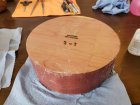Hello fellow wood turners,
I was wondering if someone could shed some light on the issues I'm having cutting Easter Red Cedar? It cuts beautiful for me but as soon as I start sanding I run into issues with checking and cracks? I usually just have issues with stress cracks that don't go through, just surface cracks. But this piece I cut today actually formed a few good sized cracks. I start sanding with 120 grit using abranet sanding pads. When I get to 320 grit the light cracks start showing up? I can go back down to 120 grit and get rid of them most of the time. But the part today formed some cracks. I put some thin CA, and then followed with medium to hold it together. So what can be causing this? I thought it was heat from sanding at first but I was very careful to just lightly sand to prevent heat build up. This would be my fourth project that this happened to me from lidded boxes to bowls, always the same result. It's driving me crazy now and need some help and advice. This one was a birthday gift for my wife so it was disheartening to have it crack on me, needless to say I was unable to give it to her as a gift. I want to work on it more tomorrow to see if I can salvage the bowl for her. She absolutely loves the red cedar, so do I but it has defeated me several times now. I will post some pictures so you can see what I'm talking about.
Thank you for any help or guidance you can provide!
Dylan
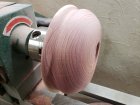

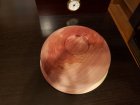
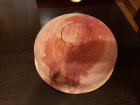
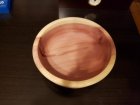
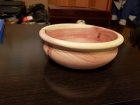
I was wondering if someone could shed some light on the issues I'm having cutting Easter Red Cedar? It cuts beautiful for me but as soon as I start sanding I run into issues with checking and cracks? I usually just have issues with stress cracks that don't go through, just surface cracks. But this piece I cut today actually formed a few good sized cracks. I start sanding with 120 grit using abranet sanding pads. When I get to 320 grit the light cracks start showing up? I can go back down to 120 grit and get rid of them most of the time. But the part today formed some cracks. I put some thin CA, and then followed with medium to hold it together. So what can be causing this? I thought it was heat from sanding at first but I was very careful to just lightly sand to prevent heat build up. This would be my fourth project that this happened to me from lidded boxes to bowls, always the same result. It's driving me crazy now and need some help and advice. This one was a birthday gift for my wife so it was disheartening to have it crack on me, needless to say I was unable to give it to her as a gift. I want to work on it more tomorrow to see if I can salvage the bowl for her. She absolutely loves the red cedar, so do I but it has defeated me several times now. I will post some pictures so you can see what I'm talking about.
Thank you for any help or guidance you can provide!
Dylan









